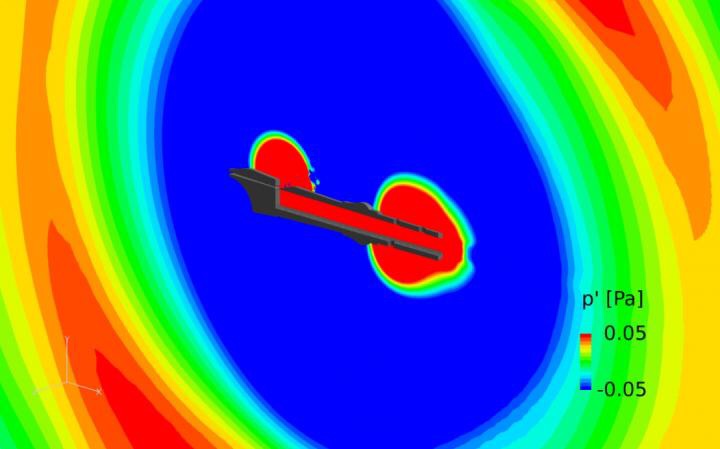ACADEMIA
Supercomputer simulations explore how an air-reed instrument generates air flow, sound

Hiroshi Yokoyama and his colleagues at Department of Mechanical Engineering, Toyohashi University of Technology in collaboration with researchers at YAMAHA Corporation have succeeded in directly predicting sound radiating from a recorder for the first time all over the world (Figure 1, Movie 1). The calculations for this study took two weeks using about 100 nodes of supercomputers (FX10 in the Tokyo University or Kyushu University). It was a huge computational cost.
{media load=media,id=115,width=200,align=left,display=inline}
In air-reed instruments such as a recorder, the flow velocity fluctuates by the blowing of performer. These fluctuations generate sound (pressure and density fluctuations). It had been known that a small change of the shape or material of instruments critically affects ease of playing or how a performer feels during performance. However, the detailed relationship of the shape or material and the sound had not been clarified, and the reason why they affect the tones was unknown.
However, by these predicted results, we understand the way the sound is radiating from flows in the recorder. Moreover, the way the sound is propagated to the far field (performer's ears or audience) around the recorder was also clarified (Movie 2). These results contribute to the revolution of the design of future musical instruments.
Everyone knows the instrument radiates sound when we blow it. However, the complex flow and sound phenomena are hidden. In your childhood, did you find it difficult to resonate the lowest "do" in music classes? In the future, we can clarify the effects of the shape of instruments on tones clearly using computers. I believe that it becomes possible to propose a new design of musical instrument easy-to-play or new musical instruments.
